|
The Dream Interpretation of Daniel - around
500 B.C.
The Rise and Fall of the Great Empires
Head - Babylonian (now central Iraq, time of Daniel)
Chest -
Medes/Persian (now Iran, time of Queen Esther)
Waist - Greek (time of Alexander the Great until Cleopatra VII)
Legs
- Roman (time of Julius Caesar, Augustus Caesar, Herod, Jesus of Nazareth, the Apostles, Paul of Tarsus, Nero, Constantine)
Feet
- Various kingdoms and nations (from 410 A.D. to present day)
Rock (aimed to strike feet) - coming of the Kingdom of Heaven
(God's kingdom)
This phenomenal best-selling set of Bible stories is arguably
the most complete and most accurate collection available. Beautifully illustrated with pictures your child will never forget.
Cecil B. DeMille described the set as a wonderful translation of the Bible for children. These stories will bring the Bible
alive for your child. President John F. Kennedy had this set available for John John and Carolyn. Queen Elizabeth II asked
Uncle Arthur for a set for the royal family.
The Seven Wonders of the Ancient World
From left to right, top to bottom: Great Pyramid of Giza, Hanging Gardens of Babylon, Temple
of Artemis, Statue of Zeus at Olympia, Mausoleum of Maussollos, Colossus of Rhodes and the Lighthouse of Alexandria.
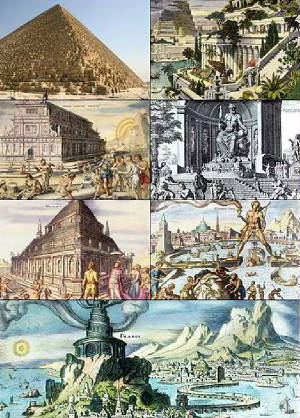
|
| Click to enlarge |
| Great Wall of China |

|
| Click to enlarge |
The structure was erected over a period of almost 2,000
years, by different builders. The earliest parts were constructed between 453 and 221 B.C., when rival war lords built walls
to keep each other at bay. In the 3rd century B.C. (221-206 B.C.), the first emperor to unify China, Qin Shi Huang Di, erected
walls to protect China from northern invaders. His successors, the Han emperors, who ruled China for more than 400 years (206
B.C.-220 A.D.), extended the walls westward. However, much of what we now call the Great Wall was built in the 14th through
17th centuries, during the Ming dynasty.
The Roman Empire
The Roman Empire dominated much of the civilized world
from 300 B.C. to 450 A.D. because of its favorable relative location. Italy, with its long coastline and good harbors, jutted
into the Mediterranean Sea. It was centrally located between Greece and the Middle East to the east, the Iberian Peninsula
to the west, and North Africa to the south. The Roman Empire used its naval superiority to carry its legions all around the
Mediterranean Sea to add to its empire. Rome overcame its mountainous terrain by building a network of roads to link cities
on the Italian peninsula. Its Mediterranean climate was no different from the climate of the regions it conquered. One reason
Rome expanded was to acquire natural resources of iron and copper that it lacked.

| Julius Caesar |
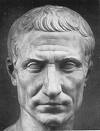
|
Veni, vidi, vici is a famous Latin sentence spoken by
Julius Caesar in 47 BC.
Caesar's terse remark -- translated as "I came, I saw,
I conquered" -- simultaneously proclaimed the totality of his victory and served to remind the senate of Caesar's military
prowess (Caesar was still in the midst of a civil war); alternatively, the remark can be viewed as an expression of Caesar's
contempt for the patrician senate, traditionally representing the most powerful group in the Roman Republic.

|
| Click to enlarge |
|
 |
|

King Herod the Great supported the campaigns of Julius
Caesar when Julius Caesar defeated his rivals to rule the Roman Empire and conquered the lands in the Middle East, he chose
Herod the Great to rule Israel. The family of Herod belongs to Edom - from Esau, the twin brother of Jacob (Israel). Esau
traded half of his birthright for a bowl of stewed red beans with Jacob. Thus, there is a long history of antagonism between
the descendants of Jacob and of Esau throughout Old Testament history.

Cleopatra VII of Egypt also supported
Julius Caesar and won his favor.
| Sphinx, Giza, Egypt |
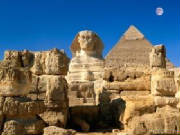
|
She became the Queen of the Nile and last Egyptian pharaoh.
She even bore Julius Caesar's son, Caesarion ("Little Caesar" or "Little Emperor"), even though Julius Caesar was already
married.
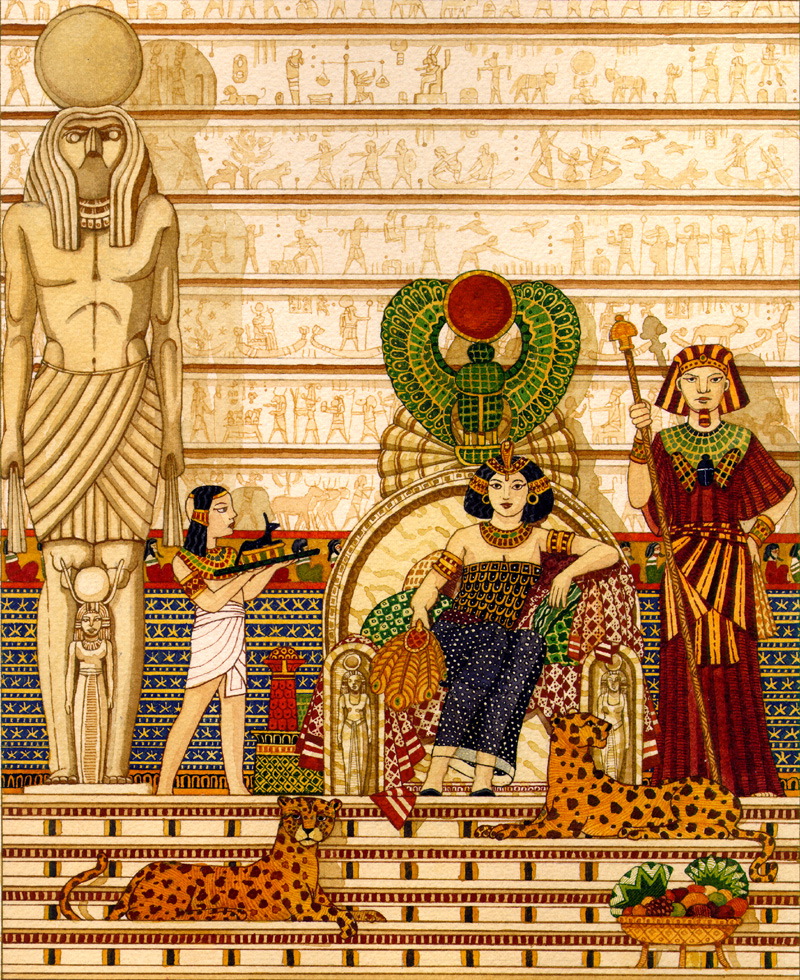
|
| Click to enlarge |
She was a descendant of Ptolemy (the
first Ptolemy to rule Egypt around 323 B.C. was the Greek general of Alexander the Great
from Macedonia).

|
| Ptolemy I |
| Alexander on horseback |

|

|
| Alexander the Great |
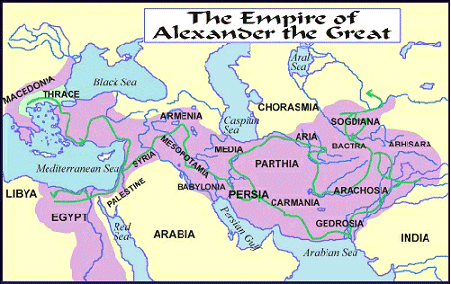
|
| Click to enlarge |
| Cleopatra VII |
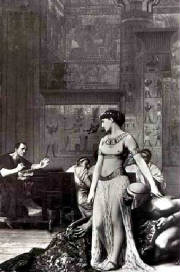
|
| Click to enlarge |
When Julius Caesar was being influenced by Cleopatra
to act like a monarch, this angered the Roman elders (Senate) who valued their democratic rule and republican
government (the Roman Empire allowed polytheism -- worship of different gods and goddesses -- as long as it did not
interfere with the Roman authority. Rome should be above all else). This led to the assassination of Julius Caesar...
| Assassination of Julius Caesar |
|
|
| Click to enlarge |

Later on, she got involved with the Roman general and
statesman Mark Antony. They eventually got married (even if Mark Antony was already married), and with
the support of her husband, fought a war against Rome over disputed territories. Cleopatra was defeated, her
son (Caesarion) was assassinated and Mark Antony tried to kill himself. After Mark Antony's death, she committed
suicide (snakebite) in 30 B.C. instead of subjugating herself to Rome under Augustus Caesar
(heir and nephew of Julius Caesar). Egypt then became a Roman province.
| Augustus Caesar |

|
Augustus, the first ruler of Rome after it became an
empire, restored civil order, peace, and prosperity to a Rome that had suffered several decades of civil wars following the
assassination of Julius Caesar. Born Gaius Octavius and adopted by Caesar, he was given the name Augustus, which means “consecrated,”
by the senate after he avenged Caesar’s death and consolidated his power. He later received the title, imperator, from
which was derived the word “emperor.”
| Joseph and Mary |

|
| Born in a manger |
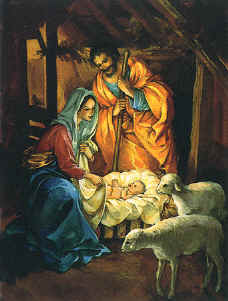
|
| Madonna and Child |
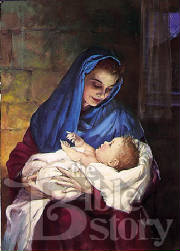
|
| Click to enlarge |
Mary looked down on the child in her arms. This was
the baby everybody wanted. He would bring joy to the world and give everyone the promise of eternal life.

|
| Click here to view simulation |

|
| Click to enlarge |
Magi (Majusian)From old Persian language, a priest of Zarathustra (Zoroaster). The Bible gives us the direction, East and the legend states
that the wise men were from Persia (Iran) - Balthasar, Melchior, Caspar - thus being priests of Zarathustra religion, the
mages.www.farsinet.com/wisemen/magi.html
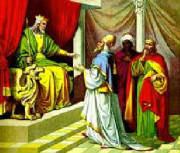
|
| Click to enlarge |
King Herod the Great received
the wise men from the east (Persia, now Iran). They were looking for the newborn king
of Israel.
| www.whatsaiththescripture.com |
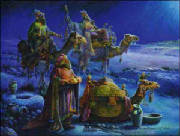
|
| "And Wise Men Came Bearing Gifts" by Tom duBois is provided courtesy of Christ-Centered Art |
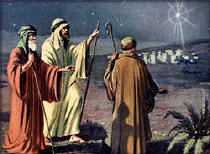
When the wise men did not return to King Herod
the Great to report, he ordered that all children in Bethlehem, two years and below, be killed. The family of Jesus
fled to Egypt. King Herod the Great feared for a rival to the throne of Israel; he was only appointed to rule over Israel
by the Roman Empire.
| John Baptizes Jesus in Jordan River |
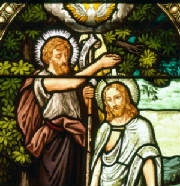
|
And John testified, "I saw the Spirit descending from
heaven like a dove, and it remained on him. I myself did not know him, but the one who sent me to baptize with water said
to me, 'He on whom you see the Spirit descend and remain is the one who baptizes with the Holy Spirit.' And I myself have
seen and have testified that this is the Son of God."
| Peter in Deep Water |
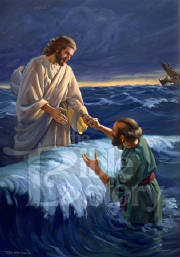
|
| Click to enlarge |
When Peter saw Jesus walking on the water, he stepped
boldly out of the boat to meet Him. But when Peter took his eyes off Jesus and saw the wind and waves, he began to sink. Peter
cried out to the Lord and Jesus immediately reached out his hand and caught Peter. As they climbed into the boat together,
the storm ceased. Then the disciples worshipped Jesus, "Truly you are the Son of God."
| The Last Supper |
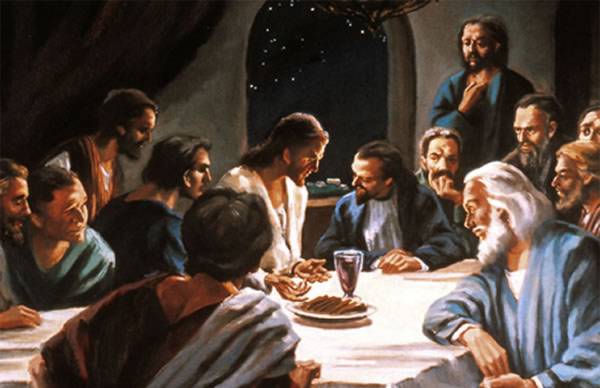
|
| Pontius Pilate |
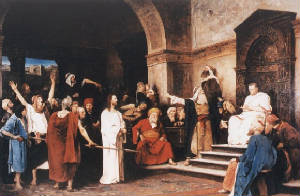
|
| Click to enlarge |
Pontius Pilate (died c. AD 36) Roman prefect of Judaea(AD 26-36) who presided at the trial of Jesus of Nazareth and gave the
order for his crucifixion. The New Testament represents Pilate as a weak and vacillating man who found no fault with Jesus
but ordered his execution to please the mob calling for his death. Known for his severity toward the Jews, he was eventually
ordered back to Rome to stand trial for cruelty and oppression. A tradition of uncertain accuracy holds that he killed himself
on orders from Caligula in AD 39; another legend relates that both Pilate and his wife converted to Christianity. (www.livius.org/pi-pm/pilate/pilate01.htm)
| Take Care of My Mother |

|
| Click to enlarge |
Mary, the mother of Jesus, knelt by cross, her heart
broken by grief. She heard Jesus whispered words asking his friend John to care for her.
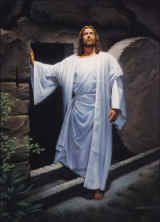
| The Incredulity of Saint Thomas |
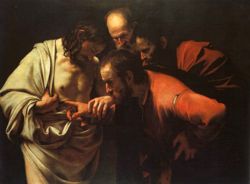
|
| By Caravaggio |
| 40 Days and the Last Great Sermon on the Mount |
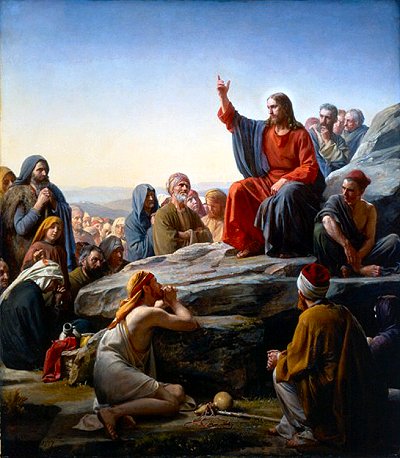
|
Only these few wonderful words remain of that last great
sermon on the mount: "All power is given unto Me in heaven and in earth. Go ye therefore, and teach all nations, baptizing
them in the name of the Father, and of the Son, and of the Holy Ghost: teaching them to observe all things whatsoever I have
commanded you: and, lo, I am with you always, even unto the end of the world."
| http://biblia.com/bible/temp-herod.htm |
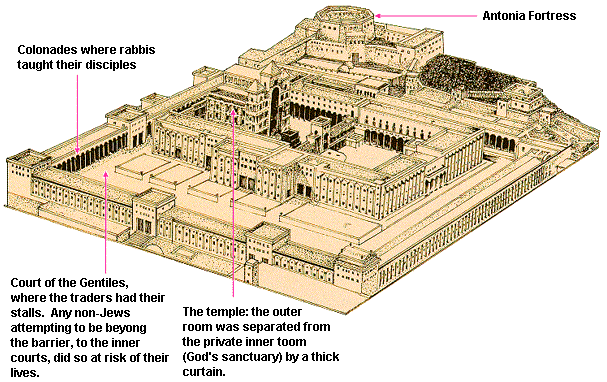
|
| The Temple at the Time of Jesus and His Apostles |
| Apostle James |
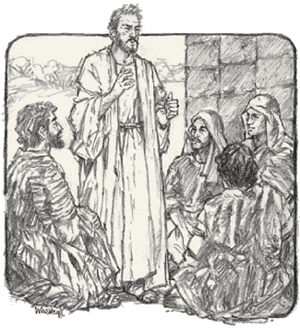
|
| He became the overseeing pastor of the Jerusalem church |
| The Seven (7) Churches |

|
| Click to enlarge |
| Rabbi Paul of Tarsus |
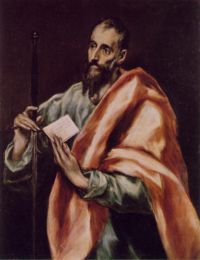
|
| By El Greco |
Paul of Tarsus was the most successful person to spread
Christianity throughout Palestine, Asia Minor (present-day Turkey), Greece, and Rome. He wrote letters (called epistles)
detailing Christian behavior. These became part of the New Testament.Emperor Nero began the persecution of Christians in Rome.
After the disastrous fire in Rome in 64 C.E. Nero had Christians, including Peter and Paul, killed.
| The Crucifixion of St. Peter |
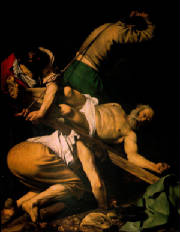
|
| By Caravaggio |
| Martyrdom of St. Paul |
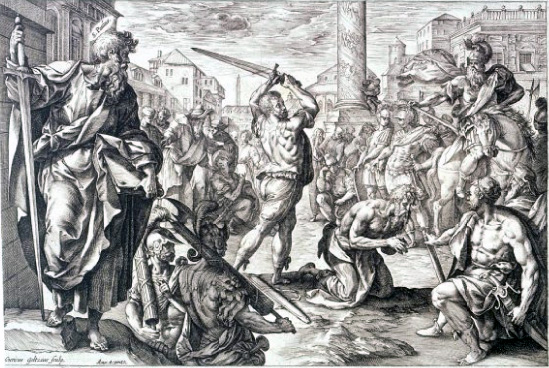
|
| By Hendrik Goltzius (16th - 17th century) |
| Christian Martyrs' Last Prayer |

|
| Painted by Leon Gerome in 1883 |
The Roman Empire's Colosseum in Rome - then, as site
for entertainment and persecution. Once held up to 50,000 spectators who came to watch gory games involving gladiators, wild
animals, and prisoners.
| Circus Maximus, Rome |
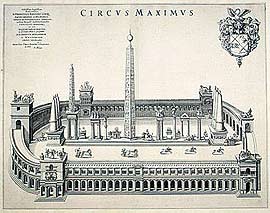
|
| Site of entertainment and persecution |
| Circus Maximus, Rome |
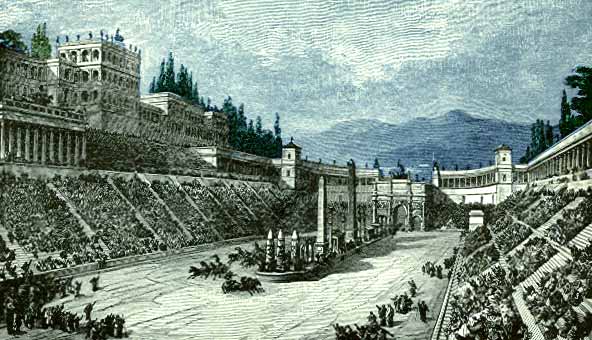
|
| Jerusalem 70CE |
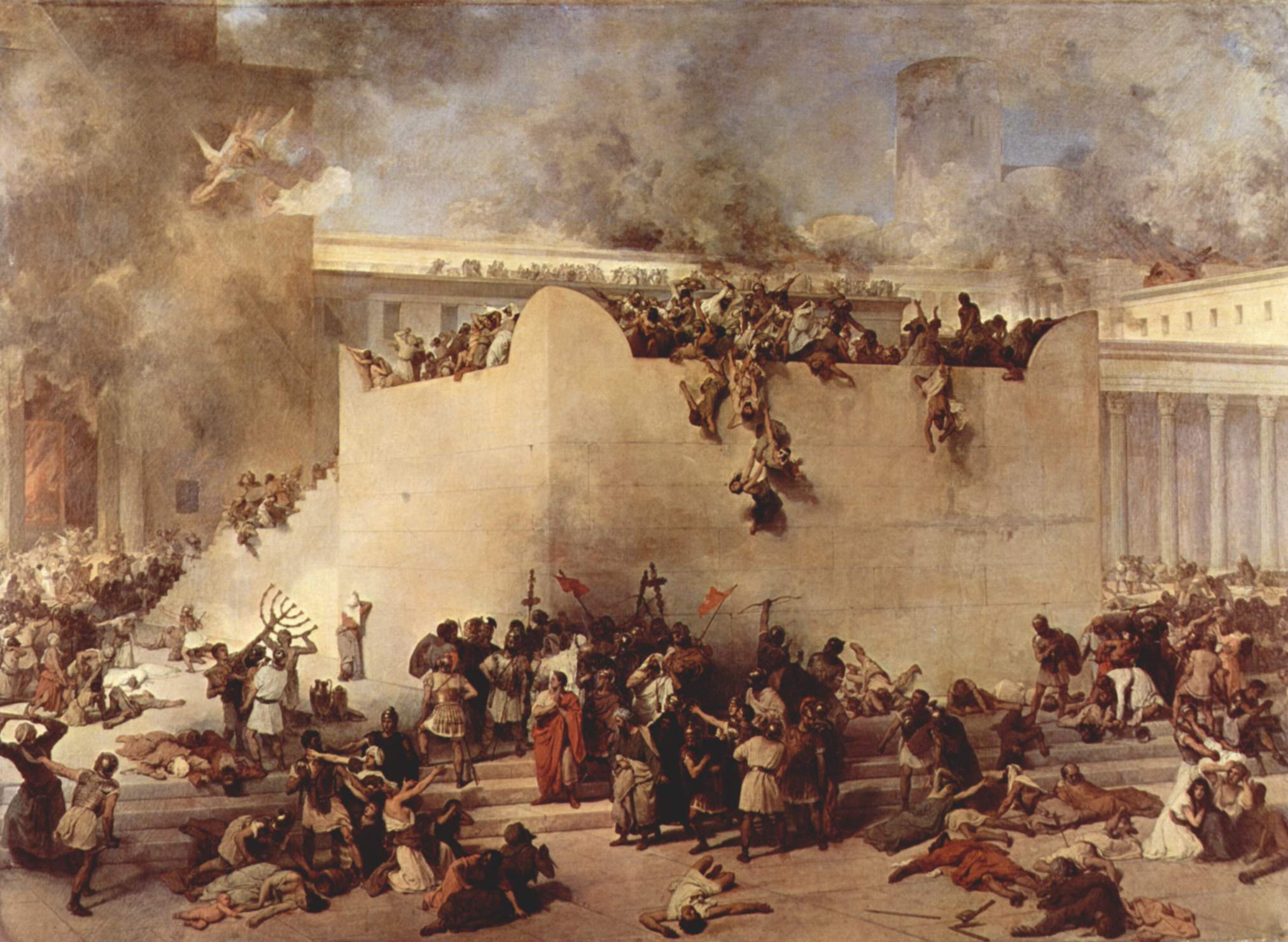
|
| Jerusalem 70CE |
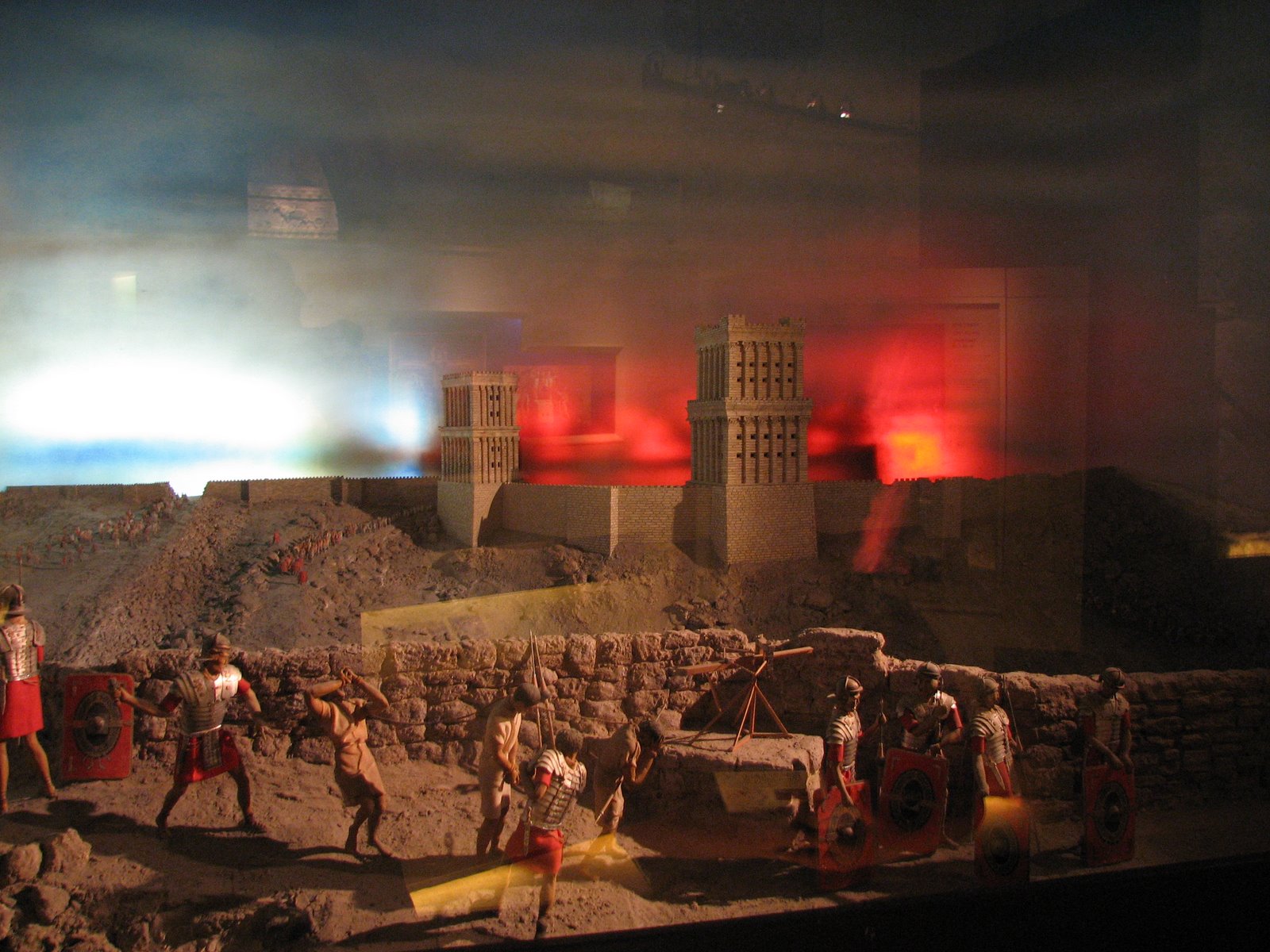
|
| Romans destroyed and burned Jerusalem |
| Arch of Titus in Rome |
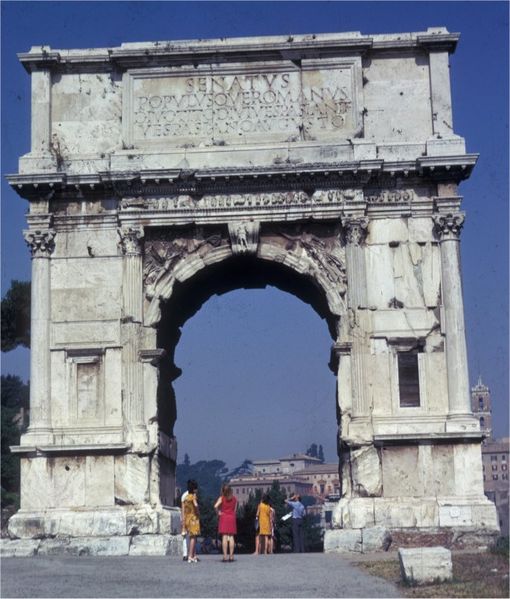
|
| Triumphal arch commemorated the capture and sack of Jerusalem in 70CE |
| Arch of Titus |
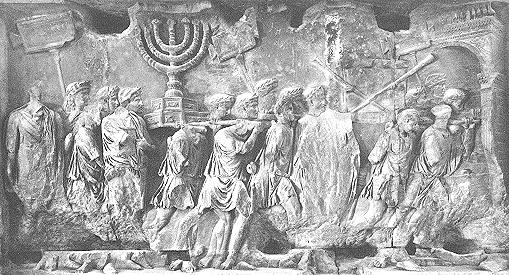
|
| Sack of Jerusalem depicted on the inside wall of the Arch of Titus in Rome, Italy |
| Chennai, India |
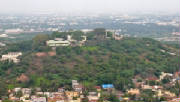
|
| St. Thomas Mount |
St. Thomas Mount is linked to St. Thomas, the renowned
`apostle` of Jesus Christ, who is thought to achieve its martyrdom here. As per the popular saying, St. Thomas was one of
the pioneering Christian missionaries who came to India in order to propagate the teachings of Christianity. He is supposed
to have arrived at South India in AD 52, and also spent the final years of his life in a fissure that was built on this mount.
According to the local belief, Thomas was killed with the aid of an arrow in AD 72, by his enemies. Thus, the hill acquired
the name St. Thomas Mount.
| Jewish Diaspora 1CE |
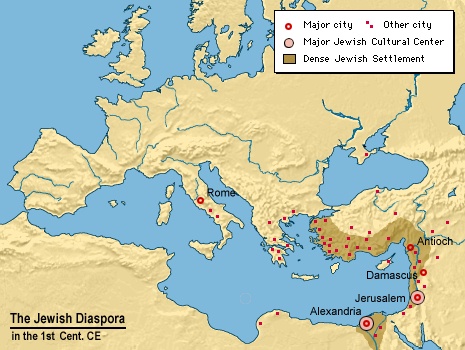
|
| Pompeii |
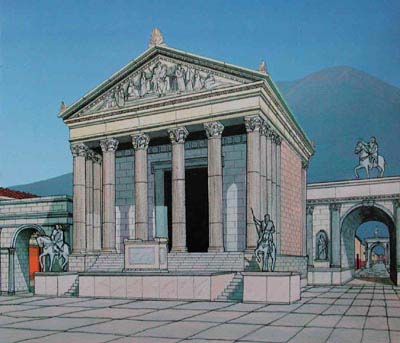
|
| Temple of Jupiter |
| Map |
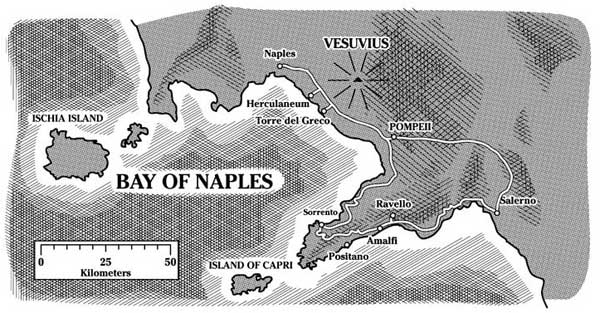
|
| Click to enlarge |
| Roman Volcano Erupted |
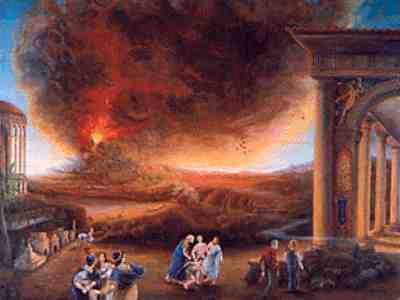
|
| Vesuvius seen from Pompeii, August 25th 79CE |
| John on the Island of Patmos |
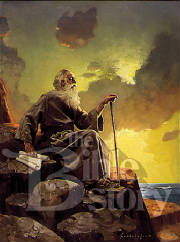
|
| Click to enlarge |
The disciple John saw visions of the future all
the way down to the end of time.
| Constantine I |

|
| 27 February ca. 272 to 22 May 337 AD |
Constantine turned the history of the world into a new
course. In 313, he issued the Edict of Milan, legalizing Christian worship, and the emperor would be a great patron of the
Church and set a precedent for the position of the Christian Emperor within the Church that would be followed for centuries.(The
Edict) removed penalties for professing Christianity (under which many had been martyred in previous persecutions of Christians)
and returned confiscated Church property.
| In Hoc Signo Vinces |
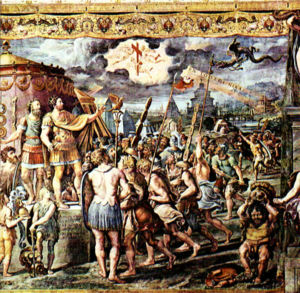
|
| In hoc signo vinces is a Latin phrase meaning "in this sign you shall conquer." |
According to legend, Constantine I adopted this as a
motto after his vision of a cross on the sky just before the Battle of Milvian Bridge against Maxentius in the year 312. The
historian Eusebius states that Constantine was marching with his army, when he looked up to the sun and saw a cross of light
above it! At first, Constantine didn't know the meaning of the apparition, but in the following night, he had a dream in which
Christ explained to him that he should use the sign against his enemies.
| Byzantine Empire |
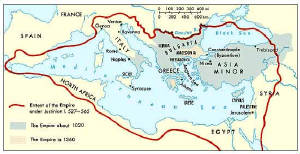
|
| Click to enlarge |
| Hagia Sophia |
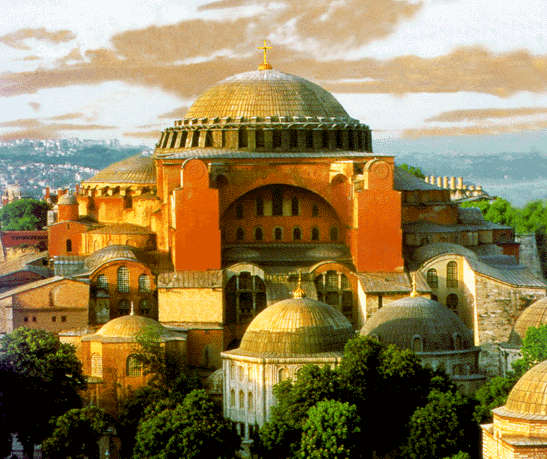
|
| Click to enlarge |
| Justinian I |
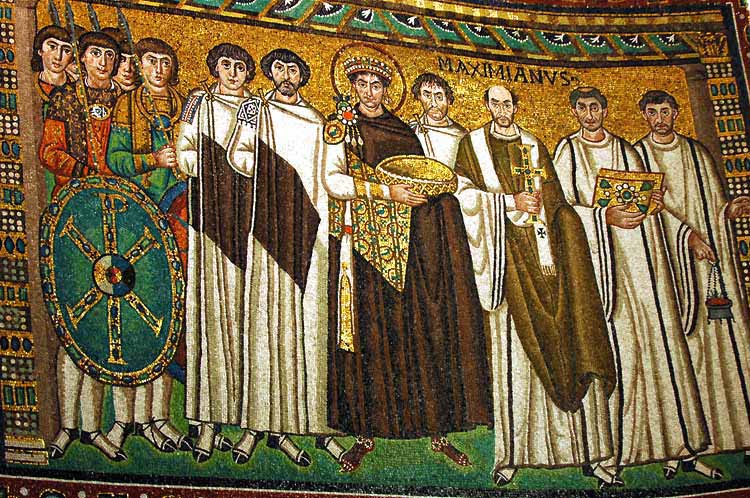
|
| Click to enlarge |
| Emperor Theodosius |
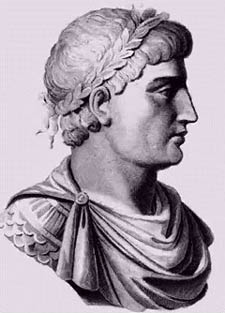
|
In AD 380 emperor Theodosius took the final step and
made Christianity the official religion of state. Severe punishments were introduced for people who disagreed with the official
version of Christianity.
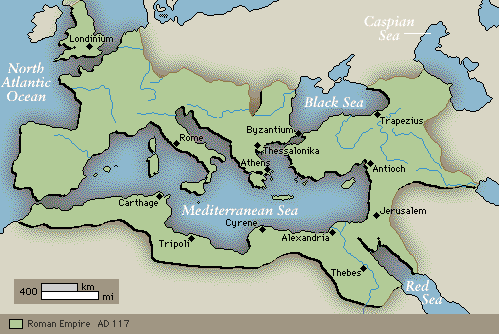
|
| Click to enlarge |
By 400, the Roman Empire had extended its control over
Western Europe from the Mediterranean Sea north to the Baltic Sea and from the Atlantic Ocean east to include much of what
is now Germany, Switzerland, and Austria. However, the Roman Empire collapsed in the 5th century resulting in a disunited
Europe in 800. By 400, Christianity had spread into Western Europe where it competed with native pagan religions. The Mongols
invaded Europe in the 13th century.
|
|
 |
|
| Dream Image |
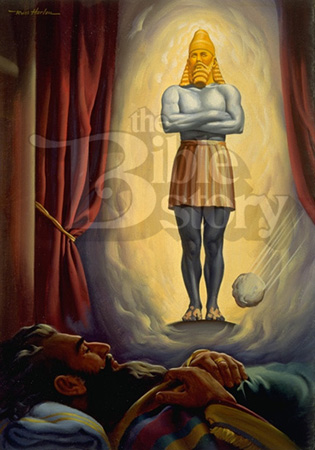
|
| Click to enlarge |
In a dream, the king of Babylon, Nebuchadnezzar, saw a
great image with a head of gold, a chest of silver, a waist of brass and legs of iron.
| Time Idol |
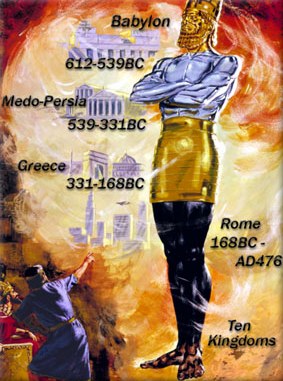
|
| Click to enlarge |
All of this history serves to illustrate for us that
no good ever comes from our best efforts, our self effort in the Christian life, which is the root source of what the Bible
calls "the flesh." Only the works of G-d, the works of the Holy Spirit done through us when we are obedient and submissive
to G-d---have any lasting worth. All else will, in the end, be destroyed.

| Melchizedek (King of Righteousness) |
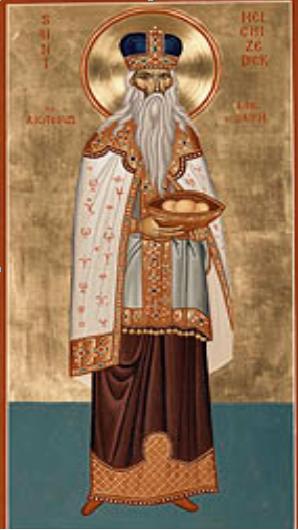
|
| Byzantine art |
In Genesis, Melchizedek is also referred to as king
of Salem i.e. Jerusalem), and priest of El Elyon. El-Elyon can be translated as most high god, and is usually interpreted
as a reference to the sole God of the Old Testament.
| Melchizedek and Abraham |

|
Melchizedek was the ancient King of the area now known
as Jerusalem. The Title Melchizedek is comprised of two words Melechi meaning My king and Tzedeq meaning righteous. Together
this is loosely interpreted as My King Is Righteous or My Righteous King. In Hebrews 7:1 to 3 we read ‘ For this Melchizedek,
king of Salem, priest of the most high, who met Abraham returning from the battle of the Kings, and blessed him; To whom also
Abraham gave a tenth part of all; first by interpretation King of Righteousness, and after that also king of Salem, which
is, King of peace; Without father, without mother, without descent, having neither beginning of days nor end of life; but
made like the Son of God; abideth as a priest for ever.
| The Eucharist |
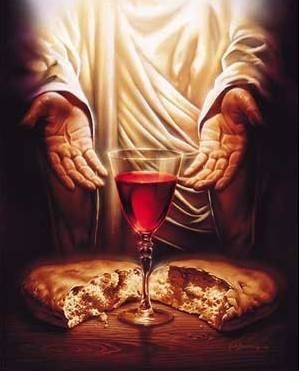
|
| Communion |
| Jesus as the High Priest |
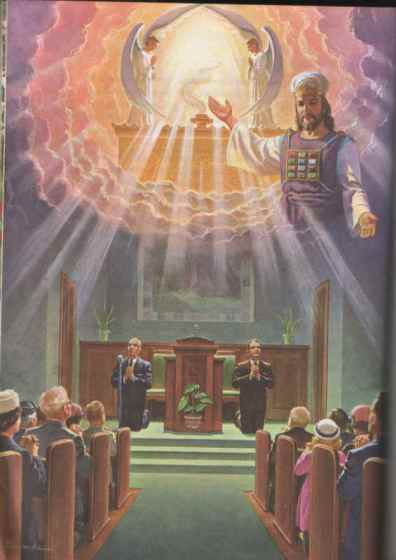
|
| An eternal priesthood in the order of Melchizedek |
| Franciscans, since 13th century |

|
| Click to enter site |
| Capharnaum, Galilee |
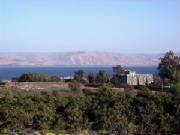
|
| The town of Jesus |
| Cana, Galilee |
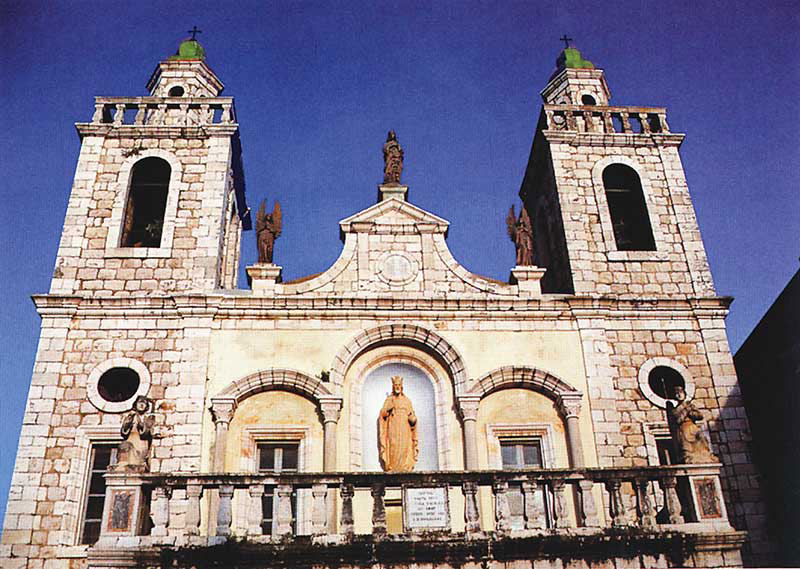
|
| First Miracle |
| Mount Tabor |

|
| Transfiguration |
| Tabgha |
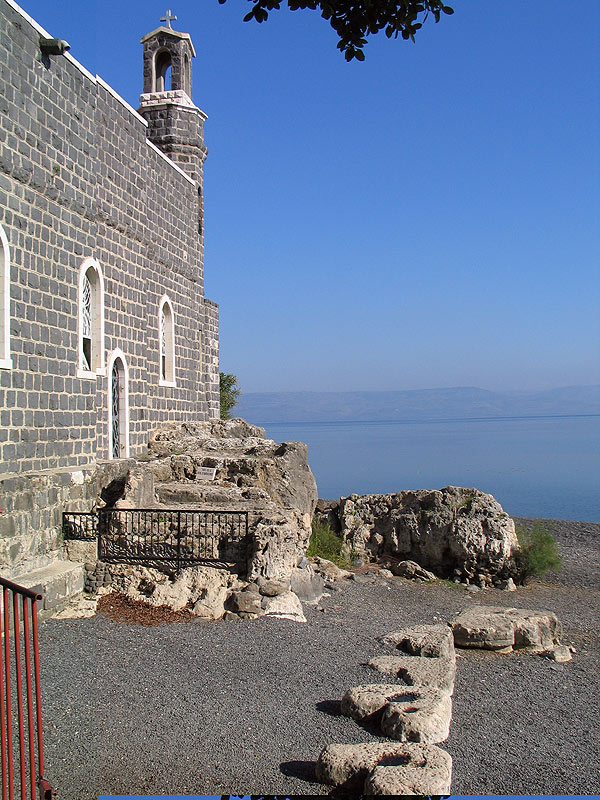
|
| Church of the Primacy of Peter |
| Bethlehem, Judea |
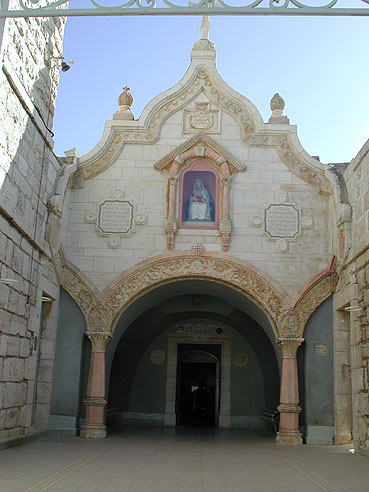
|
| Milk Grotto |
| Bethlehem |
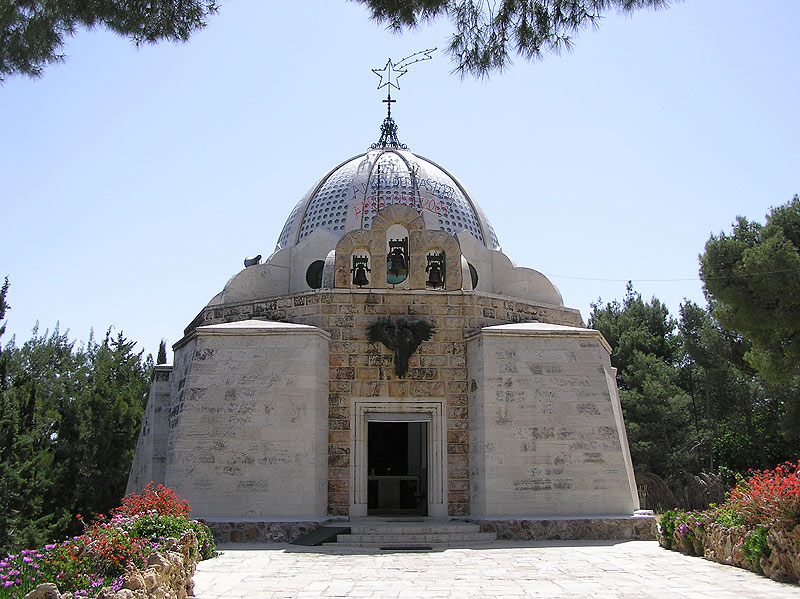
|
| Shepherds' Field |
| Ein Kerem, Jerusalem, Judea |
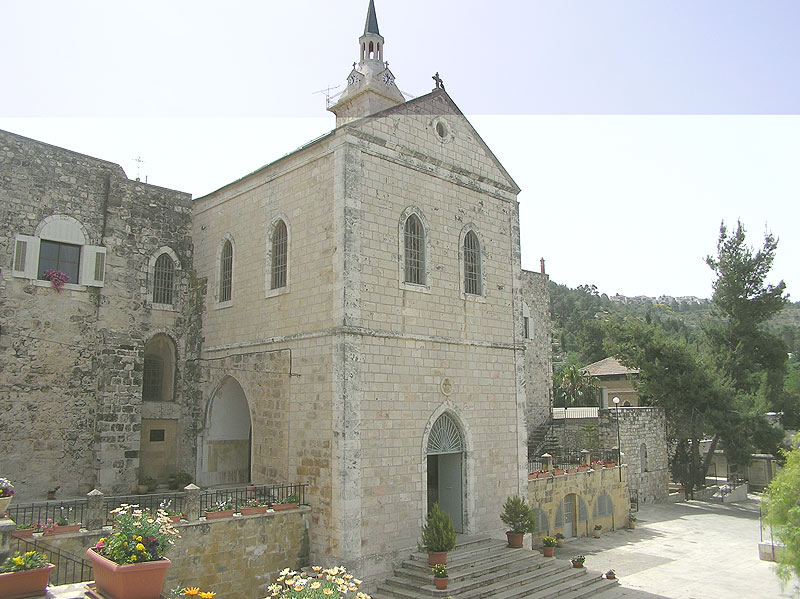
|
| Church of St. John |
| Ein Kerem, Jerusalem |
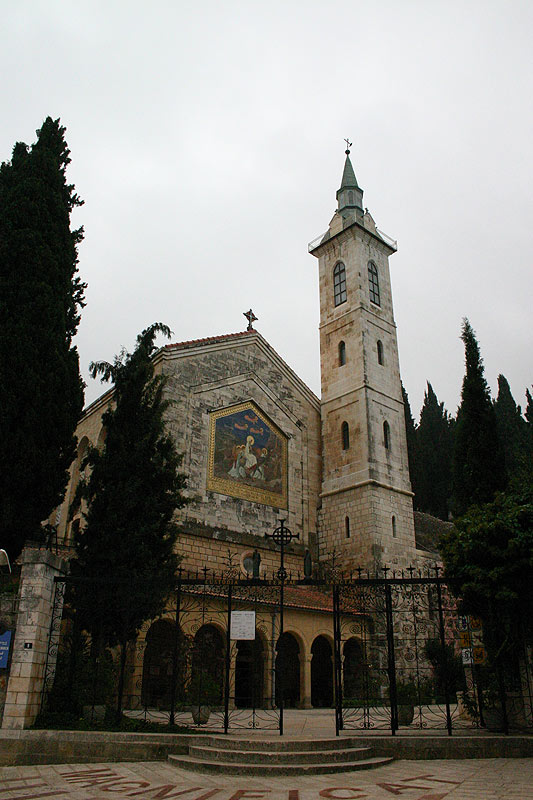
|
| Church of the Visitation |
| Church of Holy Sepulchre, Jerusalem |
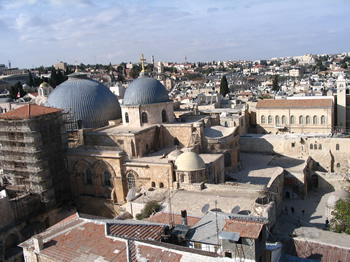
|
| Holiest site |
| Diagram |
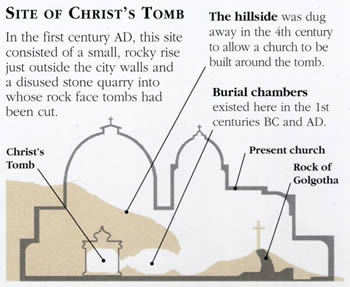
|
| Church of the Holy Sepulchre |
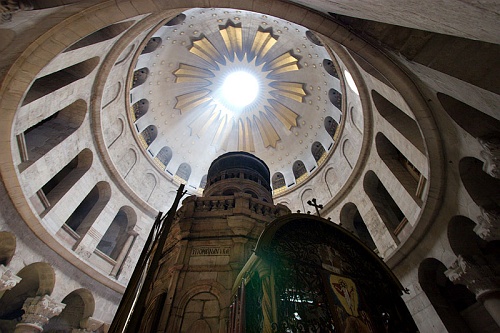
|
| Edicule |
| Chapel |
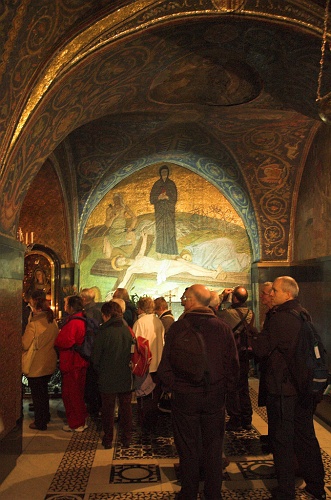
|
| Click to enlarge |
| Chapel of True Cross |
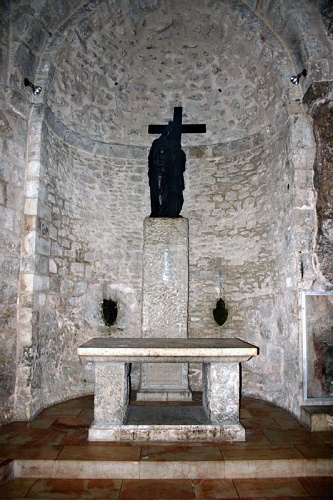
|
| Coptic Chapel |
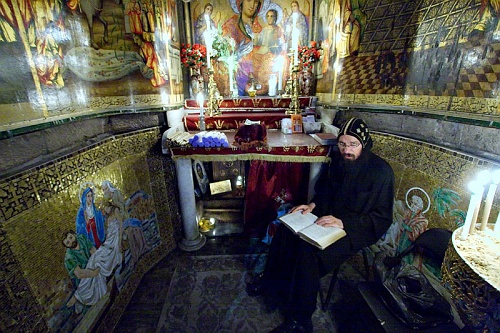
|
| Ethiopian Chapel |
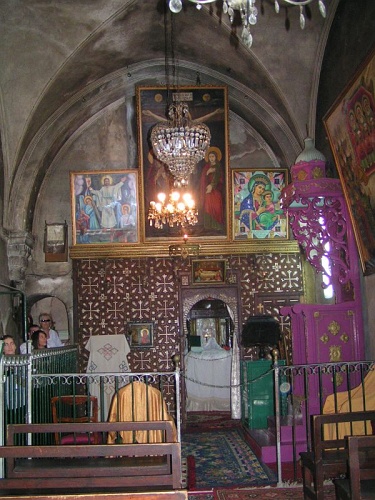
|
| Church of the Holy Sepulchre |
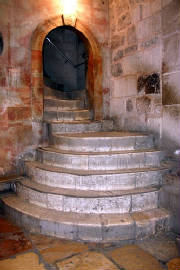
|
| Calvary Steps |
| Celebrating Mass |
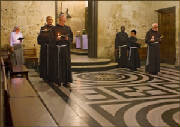
|
| Franciscans |
| Catholicon Looking East |

|
| Mount of Olives, Jerusalem |

|
| Church of Pater Noster, built 4th century, reconstructed 12th century and 20th century |
| Church and Convent of the Pater Noster |
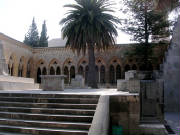
|
| Church of the Pater Noster |
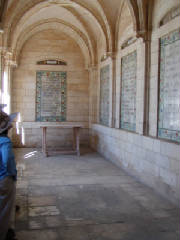
|
| Plaques in the cloister bear the Lord's Prayer in 62 different languages |
| Church of All Nations |
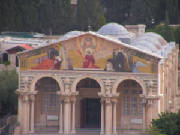
|
| St. Anne Church |
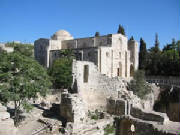
|
| Church of Dominus Flevit |
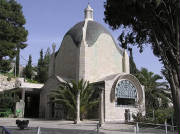
|
| Mary Magdalene Russian Church |
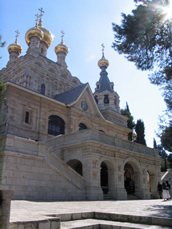
|
| Interior of Mary Magdalene Russian Church |
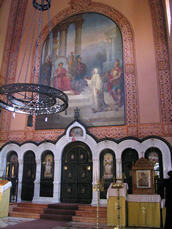
|
| Abbey of the Dormition on Mount Zion |
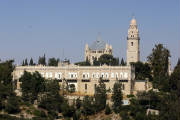
|
| Jaffa, Judea |
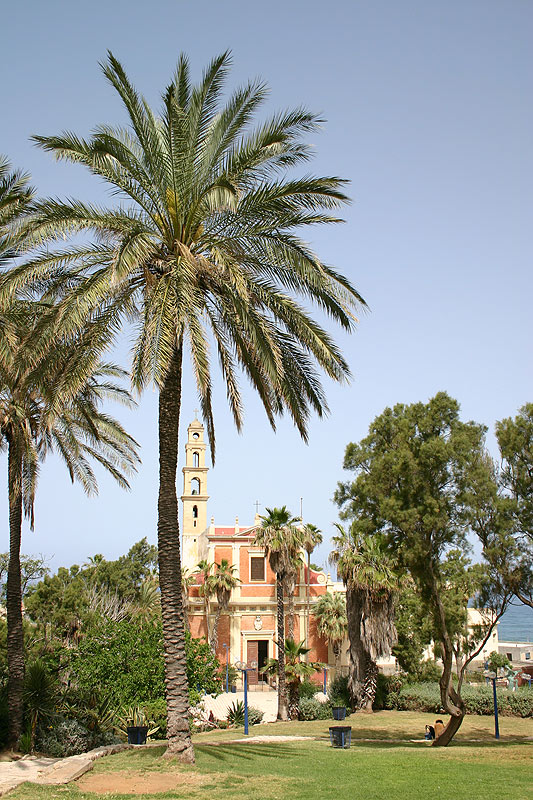
|
| St. Peter's Church |
| Cairo -Musky, Egypt |
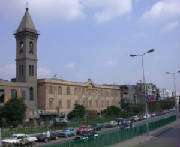
|
| Latin Church of the Assumption |
| Beirut, Lebanon |

|
| St. Joseph |
| Tripoli, Lebanon |
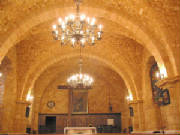
|
| Couvent de Terre Sainte (St. Francis) |
| Damascus - Bab Touma, Syria |

|
| Eglise Latine (St. Paul) |
| Damascus |
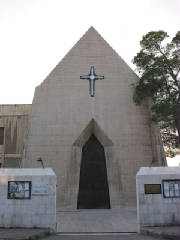
|
| Tabbaleh (Memorial of St. Paul) |
| Lattakia, Syria |
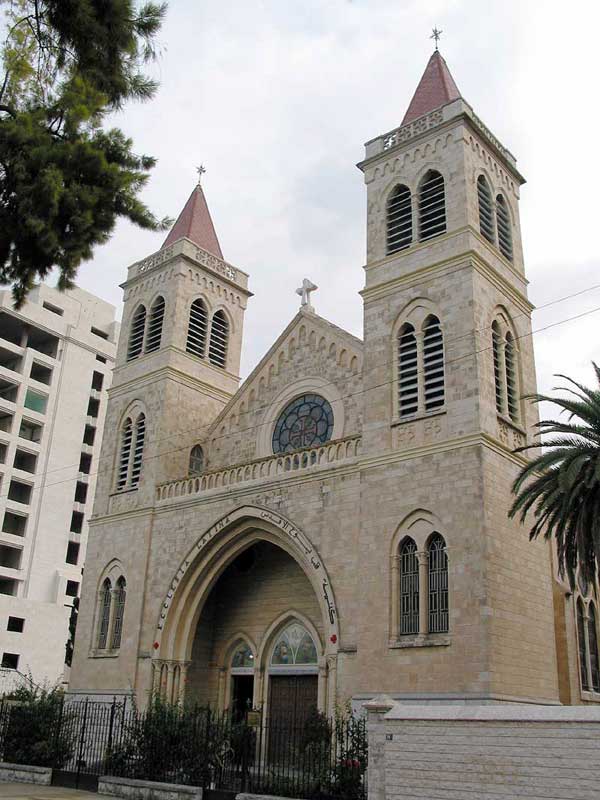
|
| Eglise Latine (Sacred Heart of Jesus) |
| Larnaka, Cyprus |
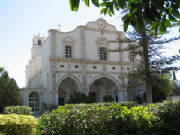
|
| S. Maria delle Grazie Catholic Church |
| Limassol, Cyprus |
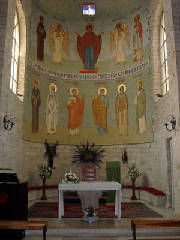
|
| St. Catherine's Catholic Church |
| Rhodes, Greece |
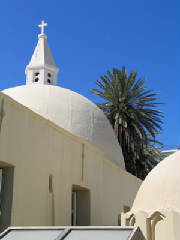
|
| S. Maria delle Vittorie Parish (Our Lady of Victory) |
| Santiago de Compostela, Spain |
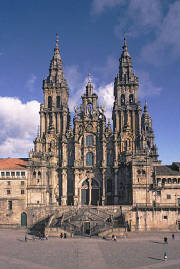
|
Christian legends tell that St. James the Elder, one
of the twelve apostles of Christ, had traveled widely on the Iberian Peninsula, bringing Christianity to the Celtic peoples.
Following his martyrdom in Jerusalem around 44 AD, his relics were supposedly taken back to Spain and enshrined. Due to Roman
persecution however, the early Spanish Christians were forced to abandon the shrine and, with the depopulation of the area
following the fall of the Roman Empire, the location of the shrine was forgotten. In 813 or 838 AD, so the legend goes, a
hermit led by a beckoning star and celestial music discovered the location of the buried relics.
| Statue of St. James the Elder |
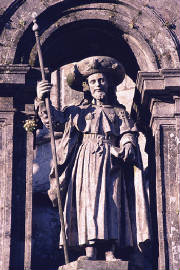
|
| Kerala, India since 52CE |
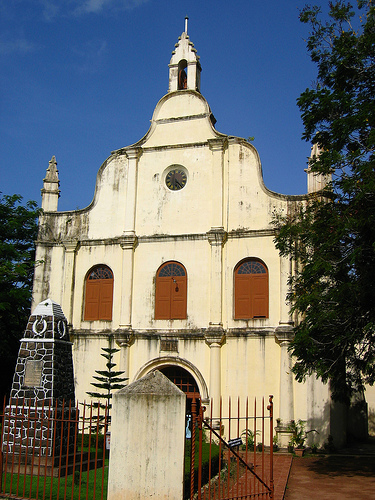
|
| Thomas Didaemus (one of the 12 apostles of Jesus) is believed to have landed here and built a church |
The Rewards to the Faithful Followers of Jesus
| New Heaven |
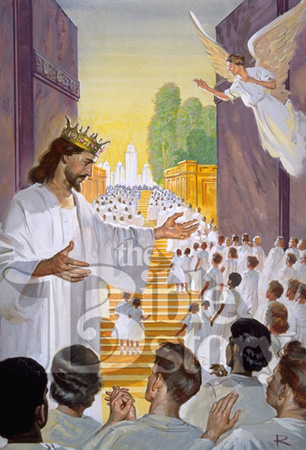
|
| Click to enlarge |
| New Earth |

|
| Click to enlarge |
|
 |
|
|
|

